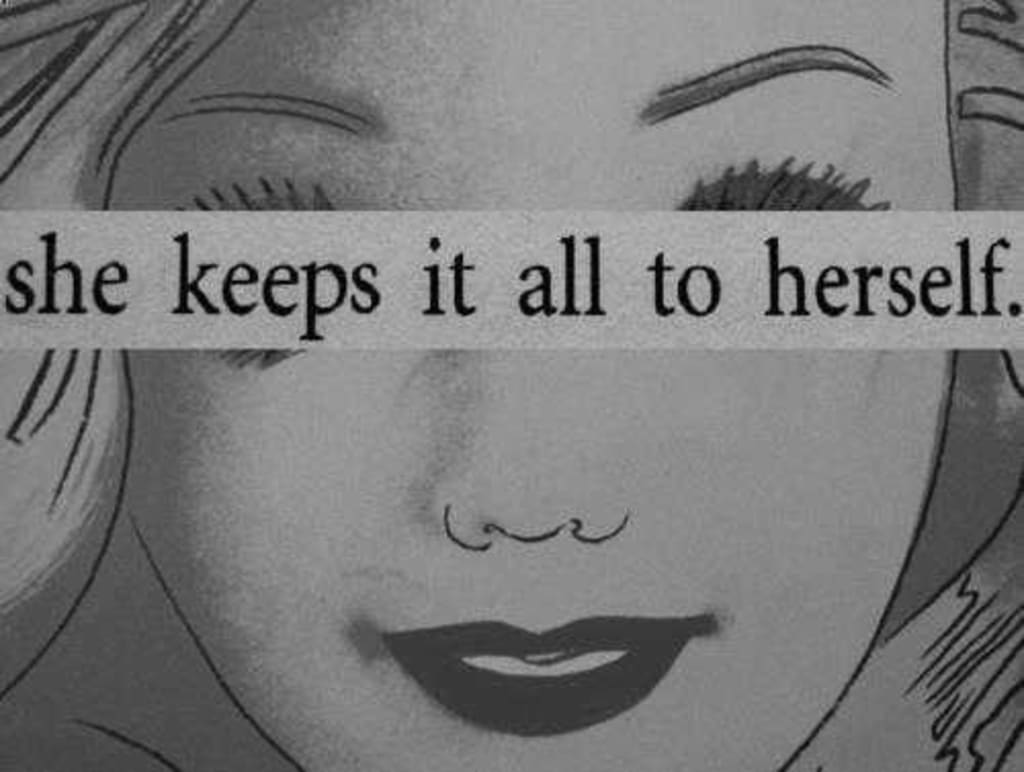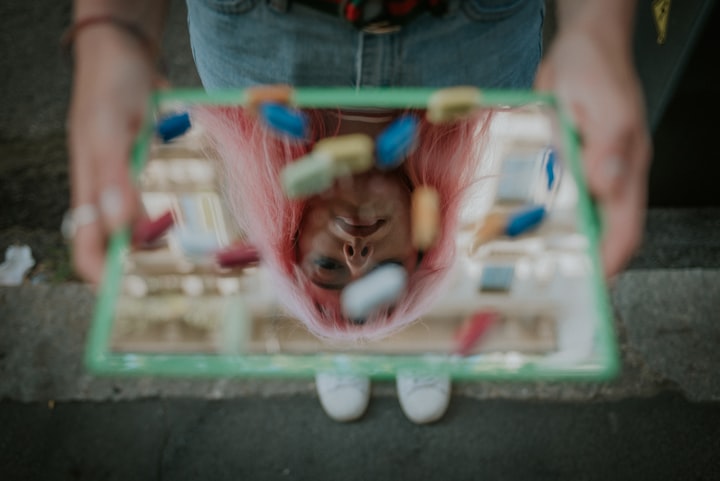
Self-harm is a major part of mental illness. Usually linked to depression and suicide, it is a difficult thing to have to deal with. The act of harming yourself has had much spotlight in the recent years, however, in this article I will not only be explaining self-harm but the ways I learned to deal with the urges and how I got to stop.
Before I begin, let me explain self-harm.
The urge to hurt yourself stems from mental illness, often because you feel emotionally numb or drained. This is a sign of depression. It is when your mind has shut itself off from thoughts and all feeling. The sense of nothingness is somewhat terrifying when you first experience it. You wonder if something has just broken and if that's just it. Will I feel like this forever? No. You won't.
The emotion of pure emptiness stems from your brain. When you're overloaded with so many thoughts and emotions, your brain finds it difficult to cope and process everything. And so it shuts off. Like a light switch. It's telling you it needs rest. And the only way to do that is to shut off. Many call this dissociating, which is actually a whole disorder in itself (Dissociative Disorder, or for short DD). However, it is a common symptom of depression and anxiety. You tend to space out and often forget who you are and where you are. This can cause a panic attack as the sudden thought of "What is my name" is terrifying. Not only that, but you may also not recognize yourself or others you know.
So, with this happening, some are urged to feel something. It becomes unbearable to feel nothing that you are willing to do anything to feel something again. This is where self-harm comes into play, and in turn addiction.
The act of self-harm released endorphins, which is your body's response to being hurt. When you suffer injuries, your brain releases the endorphins to rush a "feel good" feeling into you to stop the pain. This is the reason people become so easily addicted to self-harm as when the pleasurable feeling is gone, you feel sad again and so the need to continue harming yourself increases rapidly.
Once you're fully addicted to it, it's difficult to stop. And it's natural to have relapses. That's part of recovery and you should never beat yourself up over it. Your body has begun to crave it, and so it's only natural that at some point you may slip up. But if you are determined to recover, you will know that this was just a small set back, and not a road back into the obsessive behavior.
Even though it starts off feeling good, soon enough you will get to the point that you're so used to the pain that it's just that. Pain. Often people will use the technique to punish themselves for many different reasons or even just because it's become a routine for them instead of wanting the light feeling. You will begin to realize as you recover that it is only damaging you, which can be difficult to realize at first.
It does take time to recover fully. Nothing happens overnight. The best way to start is to get rid of any tools you use to hurt yourself. Lighters, razor blades, knives, etc. I flushed my blades and gave my razors and everything else to a trusted person (my mum) who would hide everything from me that I was unable to get to it easily. You'll find that once you start looking for things, you give yourself more time to realize that you don't actually need this and you'll learn to stop as those things aren't easily accessible anymore.
Some people will tell you to try the rubber band. However, that's just another way to hurt yourself and I never found it worked. I instead tried The Butterfly Project, in which you draw a butterfly where you harm and each time you cut or hurt yourself, you kill the butterfly, but if you do not harm yourself by the time it has completely faded away (on its own and without personally trying to remove it) you set it free. I also wrote "family" on my wrist, so that every time I went to harm myself, I could see that I would be hurting them more if I decided to hurt myself. It worked every time. So try drawing something meaningful to you or even just a butterfly and try it yourself. I found it to be effective for me and for many others struggling to recover.
Sometimes it wasn't about the pain for me, it was about seeing the actual marks on my body. I used a red pen and "slashed" myself where I would have cut with a blade. I still see marks but I didn't harm myself in the process. The marks became ugly to me and I then realized how upset I'd have been if they were real cuts that would turn into scars. Now when I want to harm, instead of making something ugly, I turn it into art and draw whatever I can think of on my arms and legs. It doesn't have to be the most amazing thing ever, remember it'll wash away. Just draw shapes or swirls with different colors. Drawing is proven to be therapeutic!
Picturing your self-harm urges as a monster, this was something I came up with for a friend, but I found that it works in all scenarios. This can work for anxiety, depression, self-harm and any other mental issues. In your mind or even on paper as a physical thing to look at, draw a monster. An ugly troll. Label that as what you need it to be. In this case, it will be self-harm urges. Now imagine pushing that troll into the ground. It's sinking into the mud and trying to get to you. But you need to force it into the mud so that its arms are stuck. It can't get to you anymore. You are strong enough to push this away and get past it. This is the aim of the Troll Technique. It's a way of picturing mental issues as something ugly and seeing it being unable to get to you because of your strength. I found this worked very well for me as being able to see it as a monster instead of just a thought helps to sort your thoughts more effectively.
An extension to the troll exercise is to mentally speak to your urges. Again, it's easier to picture it as something cruel and ugly and throw insults at it. Make the troll weaker. Tell the troll that you are not worthless, you don't need to harm yourself to feel validated or better. Scream at the troll and wear it down. This is most effective by drawing a monster and talking to that or even staring at yourself in the mirror. Remind yourself that you are beautiful/handsome and that you will get through this healthily.
A common issue with self-harm is that many experience inner thoughts or voices that will try to convince you to do it. They can say that you will feel better, that this is the only way out. This is that troll trying to talk to you. You've worn him down so that all he can do is use words. He's so weak he can't get to you now. Remember that. Make the troll weak.
Another way of coping with urges is to post notes up around your room or house, somewhere you will see them every single day. Make them positive. Use quotes from band members or people you look up to. Happy lyrics from your favorite song. Remind yourself to eat, smile and look after yourself. Positive reminders are very effective.
Please remember that talking is the most effective. If you are struggling and feel you cannot cope, talk to a friend, a family member or even a neighbor. Even strangers are willing to listen to you and offer advice (which can be done online if you find talking difficult). Below are some links and numbers:
7 Cups of Tea: Free online counseling, talk to strangers in a chat room 1-1
I'm Alive: Online confidential chat for people in crisis
Pick The Brain: Blogs about many issues to help you or others understand issues
Time to Change : Read other people's depression stories
Samaritans: Call or email them for support or check out the website for information






Comments
There are no comments for this story
Be the first to respond and start the conversation.